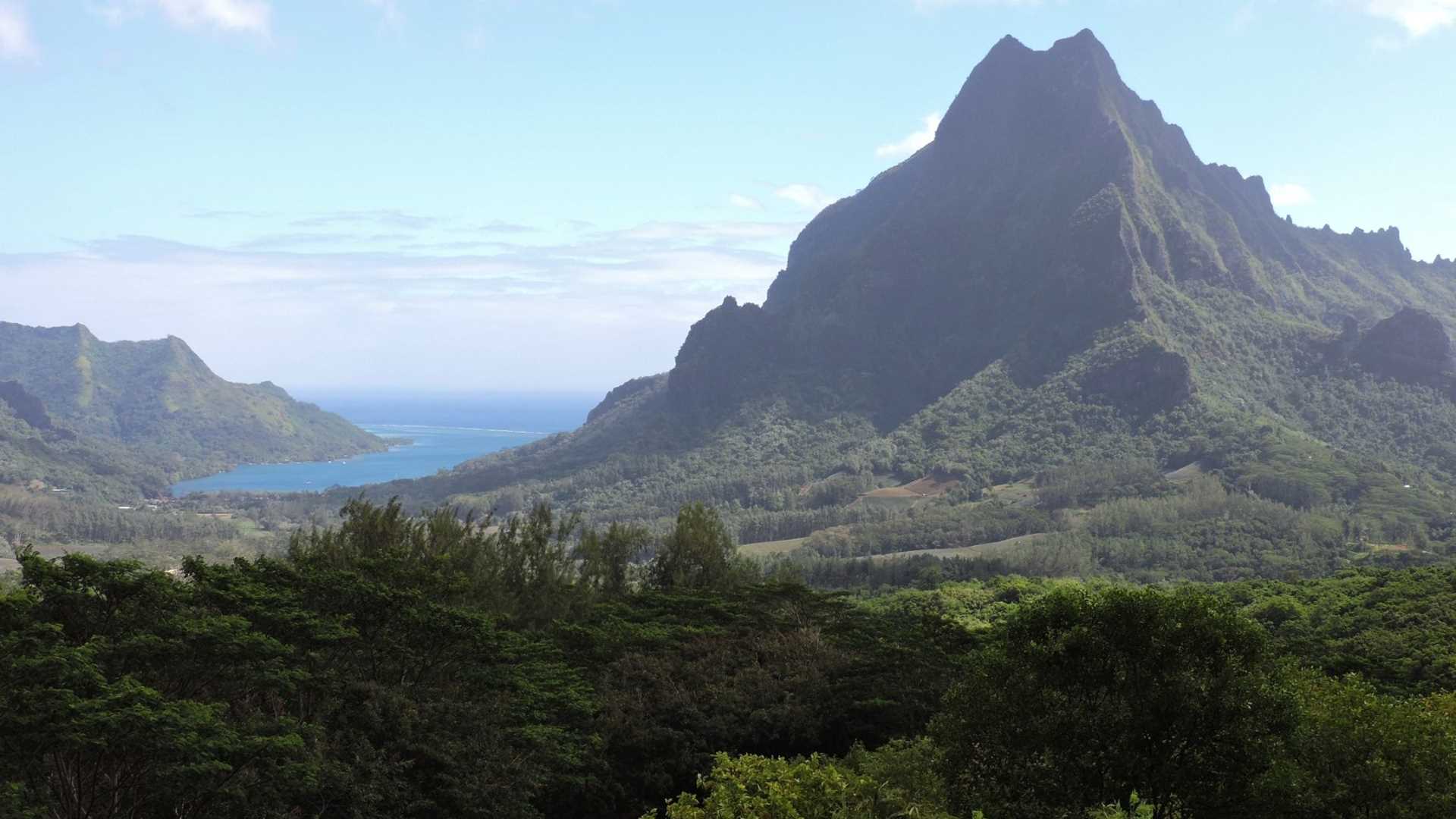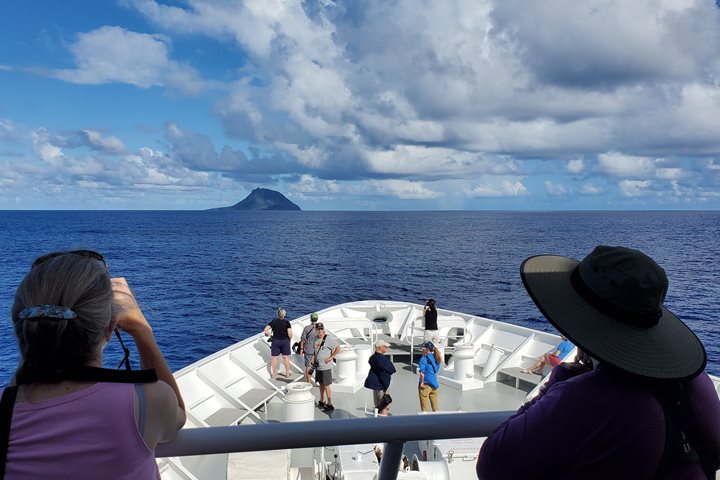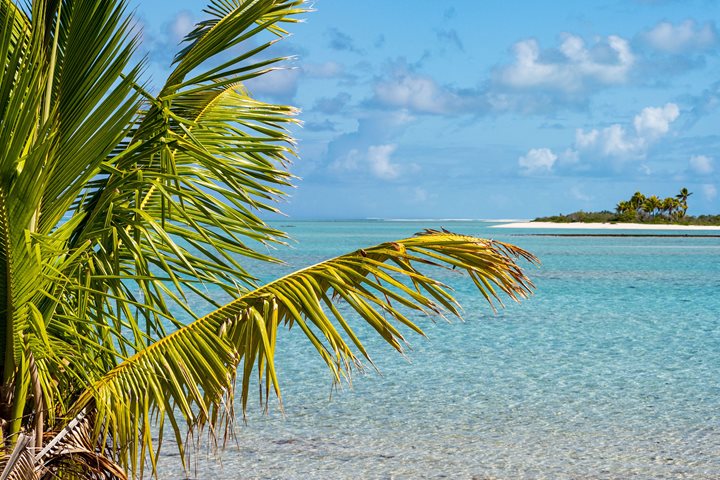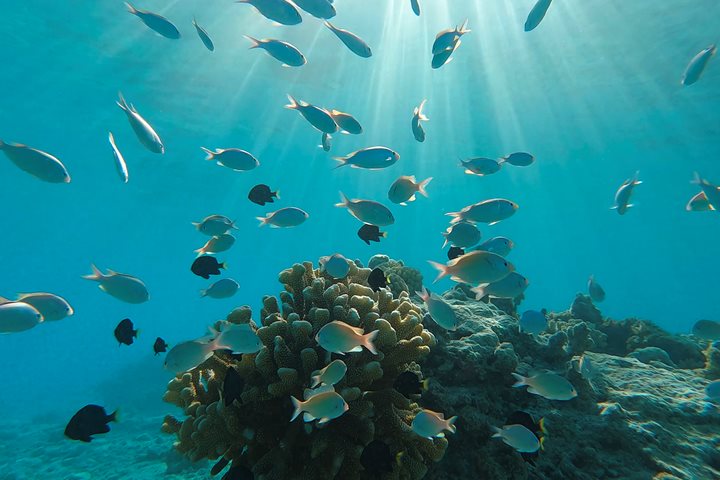After a night of fairly strong winds and gentle movement among the waves, we entered the very sheltered anchorage site in Cook’s Bay, also known as Opunohu Bay, on the north side of Moorea. We anchored before breakfast in the center of what was once the volcano’s crater. Here is where we spent the rest of the day as we enjoyed this amazingly lush, verdant, volcanic island. It is the second largest of the Îles du Vent (Windward Islands) in the Society Islands of French Polynesia. Today, les Îles du Vent certainly lived up to their name. The island is very different compared to the nearby coralline Tuamotu islands, and is reminiscent of the
Moorea is less developed and has a much smaller population than most of the other Society Islands, such as Tahiti and
We had several options to choose from during the morning. A small group of guests went scuba diving. About a third of us explored the more rugged parts of the island in four-wheel drive vehicles. Most of us visited some of the more important archaeological sites. Another group hiked on a trail in the Moorean tropical rain forest, taking time to marvel at some isolated archaeological sites hidden among the trees, and strolled through cultivated fields of pineapples. This tropical rain forest habitat is incredibly photogenic, especially among its tall trees with buttressed roots, impressive shade-giving canopy, and rich floral diversity. All the while we experienced strong winds that moved the trees and whistled eerily through the branches high overhead.
In the afternoon, many guests returned to shore to explore the region on their own and/or swim and snorkel around the landing area. Others enjoyed a Zodiac cruise around the shoreline of Cook’s Bay to admire the beautiful trees, vegetation, homes, and yachts…and a small pod of beautiful, playful spinner dolphins. We sailed back out of the lagoon in the early evening and continued about 12 miles (20 km) southeastward over to Tahiti, where we berthed the ship during dinner. Quite a few guests, staff, and crew members went ashore for a look around before retiring for the night. Most everyone had to also prepare for tomorrow’s early morning disembarkation in Papeete.







